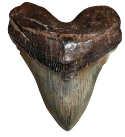Transportation
During the Revolution the Americans, British, and Loyalists used the Cooper River as a strategic transportation route. Indeed, from the earliest days of settlement in the area, the river functioned as the major mode of transportation for both goods and people. In order to make full use of the river, landing sites were established at most of the plantations located along the water. Goods such as rice and indigo were loaded at these sites onto flat boats or schooners and taken to market in Charleston. Other landing sites served plantations which were landlocked or located in the northern section of Berkeley County.
In addition to transportation along the Cooper River and its tributaries, roads and ferries were established in the early settlement period. Ferries and public roads were at first unregulated, but the General Assembly soon took over their jurisdiction. In 1705, the assembly passed legislation establishing a ferry at Strawberry and a road running south from Wadboo to “the place where the ferry shall lie at.”
Strawberry Ferry, located at the Tee in the Cooper River, was subsidized by the residents of both branches and operated between Strawberry Plantation (later Childsbury) and what is now the Bluff Plantation. This ferry was of great strategic importance during the Revolution and also provided a much-used departure point for rice transports.45
Another public road connected the ferry landing at the Bluff with the main road to Charleston, known as the Broad Path which ran along the West side of the river. A portion of this connecting road survives in the landscape there. Another public road led through the north and eastern portion of the region by the end of the eighteenth century.
The road to Calais began north of Biggin Church and continued south along the east side of the West Branch of the Cooper River, turning east above the Tee to Bonneau Ferry. Crossing the East Branch at Bonneau Ferry, the road continued south along the east side of the river, past the Church of St. Thomas to its terminus at the Calais Ferry on Daniel Island’s Clouter Creek. The Calais Ferry shuttled goods and travelers to the landing at “Dover” near Charles Town. This ferry and its road were constructed ca. 1783 and operated by John Clement. Several sections of this road are still extant and in use.
Simply the Best In Blackwater Diving
COOPER RIVER DIVE CHARTERS
Historic Resources of the Cooper River, ca. 1670-ca. 1950
Historic Resources of the Cooper River, ca. 1670-ca. 1950
United States Department of the Interior
National Park Service
National Register of Historic Places
Simply the Best In Blackwater Diving
Copyright 2020
Cooper River Dive Charters
260 Amy Drive
Goose Creek, SC 29445
843-296-3344






